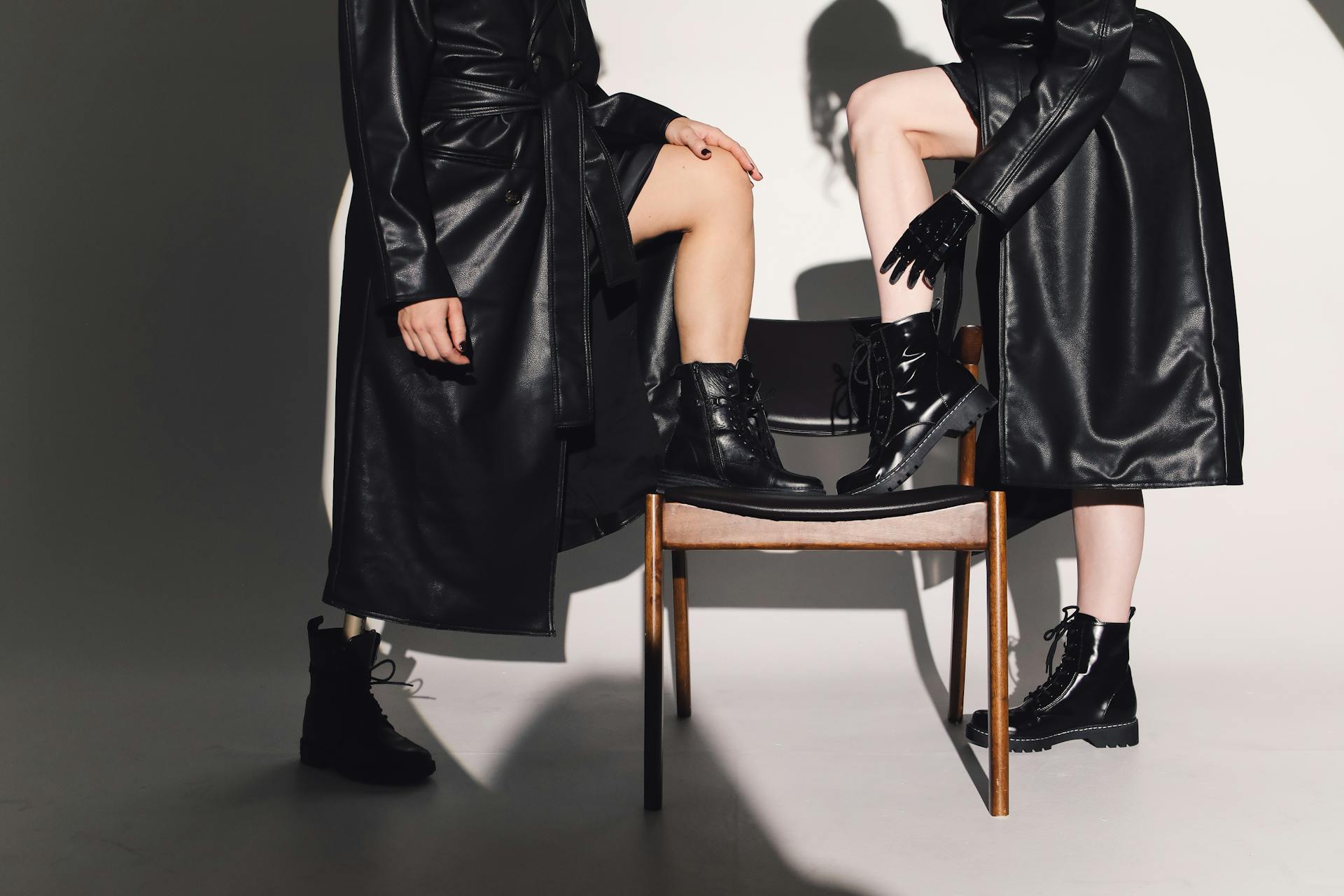As we transition into the damp and rainy months of the year, it’s crucial to ensure that your synthetic leather shoes remain in peak condition. Unlike genuine leather, synthetic leather has different care requirements, especially when exposed to wet conditions. In this article, we will share top tips for maintaining synthetic leather shoes, ensuring they stay durable and stylish even in the harshest weather.
Understanding Synthetic Leather
Synthetic leather, often known as faux leather, pleather, or vegan leather, is a man-made material designed to mimic the look and feel of genuine leather. The fabrication process involves bonding a plastic coating to a fabric backing. This material is typically more affordable and easier to maintain than its authentic counterpart. However, synthetic leather shoes can still suffer damage if not properly cared for, particularly in wet conditions.
In parallel : How to Create a Timeless Wardrobe Using Classic British Pieces?
Knowing the composition and characteristics of synthetic leather allows you to adopt the right maintenance methods, preserving its appearance and longevity. Unlike natural leather, synthetic leather does not breathe as well, making it susceptible to moisture build-up, which can lead to unpleasant odors and deterioration. Therefore, understanding and implementing the right care techniques is essential for maintaining your synthetic leather shoes in wet weather.
Cleaning Synthetic Leather Shoes
Proper cleaning is the first step in maintaining synthetic leather shoes, especially after exposure to wet conditions. When mud, water, and other debris come into contact with synthetic leather, they can leave stains and damage the material if not promptly addressed.
Also to see : What Is the Best Way to Care for and Style Afro-Textured Hair in Humid Weather?
- Initial Wipe-Down: Start by using a damp cloth to gently wipe away any surface dirt and moisture. Avoid using a soaking-wet cloth as excess water can penetrate the material and cause damage.
- Mild Soap Solution: For more stubborn dirt or stains, create a solution of mild soap and water. Dip a soft cloth into the solution, wring it out thoroughly, and gently clean the affected areas. Ensure you wipe off any soap residue with a clean, damp cloth.
- Drying: After cleaning, allow your shoes to air dry naturally. Avoid placing them in direct sunlight or near heat sources, as this can cause the synthetic leather to crack or warp. Instead, leave them in a well-ventilated area.
- Odor Control: To combat any lingering odors from moisture, sprinkle a small amount of baking soda inside your shoes and let it sit overnight. Shake out the excess in the morning for fresh-smelling footwear.
By following these steps, you ensure that your synthetic leather shoes remain clean and free from potential damage caused by wet conditions. Regular cleaning helps maintain their appearance and extends their lifespan.
Protecting Synthetic Leather Shoes
Beyond cleaning, protecting synthetic leather shoes before exposure to wet conditions can significantly enhance their durability. A few proactive measures can go a long way in preserving the quality and look of your shoes.
- Waterproof Spray: Applying a waterproof spray designed specifically for synthetic materials can provide an extra layer of protection against moisture. Before using the spray, read the manufacturer’s instructions and test a small, inconspicuous area to ensure it does not discolor the material.
- Wax or Cream: Some synthetic leather care products include waxes or creams that can seal the surface, making it more resistant to water. Apply these products sparingly and in accordance with the instructions to avoid buildup or clogging.
- Shoe Covers: For extreme wet conditions, consider investing in waterproof shoe covers. These are especially useful if you frequently find yourself walking in heavy rain or through puddles. Shoe covers can be easily slipped on and off, providing an immediate barrier against moisture.
- Regular Inspections: Frequent checks for any minor damages or wear can help you address issues before they escalate. Look for cracks, peeling, or thinning in the material, and apply protective products as soon as you notice any signs of wear.
Taking these steps will help safeguard your synthetic leather shoes from the elements, ensuring they remain in excellent condition despite frequent exposure to wet conditions.
Storing Synthetic Leather Shoes
How you store your synthetic leather shoes can also impact their durability and appearance, especially after exposure to wet conditions. Proper storage techniques can prevent the growth of mold and mildew, maintain the shape of your shoes, and extend their lifespan.
- Dry Before Storage: Always ensure your shoes are completely dry before storing them. Any residual moisture can lead to mold and mildew growth, which can be difficult to remove and may permanently damage the material.
- Use Shoe Trees: Inserting shoe trees helps maintain the shape of your shoes and prevents creasing. Opt for shoe trees made of cedar, as they also absorb moisture and odors, keeping your shoes fresh.
- Shoe Bags or Boxes: Store your shoes in breathable shoe bags or boxes. Avoid plastic containers, as they can trap moisture and contribute to mold growth. If you prefer boxes, ensure they have ventilation holes to allow for air circulation.
- Maintain a Dry Environment: Store your shoes in a cool, dry place away from direct sunlight and heat sources. A well-ventilated closet or storage area is ideal. Consider using silica gel packets or other moisture-absorbing products to keep the environment dry.
- Regular Airing: Periodically take your stored shoes out and allow them to air out. This prevents any latent moisture from accumulating and ensures your shoes stay fresh.
By implementing these storage practices, you can significantly reduce the risk of damage to your synthetic leather shoes, keeping them in top shape even after exposure to wet conditions.
Repairing Minor Damages
Despite your best efforts, synthetic leather shoes may occasionally suffer minor damages. Knowing how to address these issues promptly can prevent them from worsening and ensure your shoes continue to look their best.
- Scratches and Scuffs: Minor scratches and scuffs can often be remedied with a synthetic leather repair kit. These kits typically include a filler compound and a color-matching component. Clean the area thoroughly before applying the filler, and follow the instructions to blend it seamlessly with the surrounding material.
- Peeling: If the synthetic leather begins to peel, you can use a leather adhesive to reattach the material. Apply a small amount of adhesive to the peeling area and press it down firmly. Allow it to dry completely before using the shoes again.
- Cracks: For small cracks, a synthetic leather conditioner can help restore the material’s flexibility and appearance. Apply the conditioner according to the manufacturer’s instructions, and buff the area gently with a soft cloth.
- Professional Repairs: For more significant damages or if you are unsure about DIY repairs, consider taking your shoes to a professional cobbler. They have the expertise and tools to perform high-quality repairs that can extend the life of your shoes.
By addressing minor damages promptly, you can keep your synthetic leather shoes in excellent condition, ensuring they look good and last longer, even in wet conditions.
Maintaining synthetic leather shoes in wet conditions requires a combination of proper cleaning, protection, storage, and timely repairs. By understanding the unique characteristics of synthetic leather and following the steps outlined in this article, you can ensure your shoes remain durable and stylish throughout the rainy season. Remember to clean your shoes promptly after exposure to moisture, use protective products to shield them from the elements, store them correctly, and address any minor damages as soon as they occur. With these top tips, your synthetic leather shoes will continue to serve you well, regardless of the weather.











